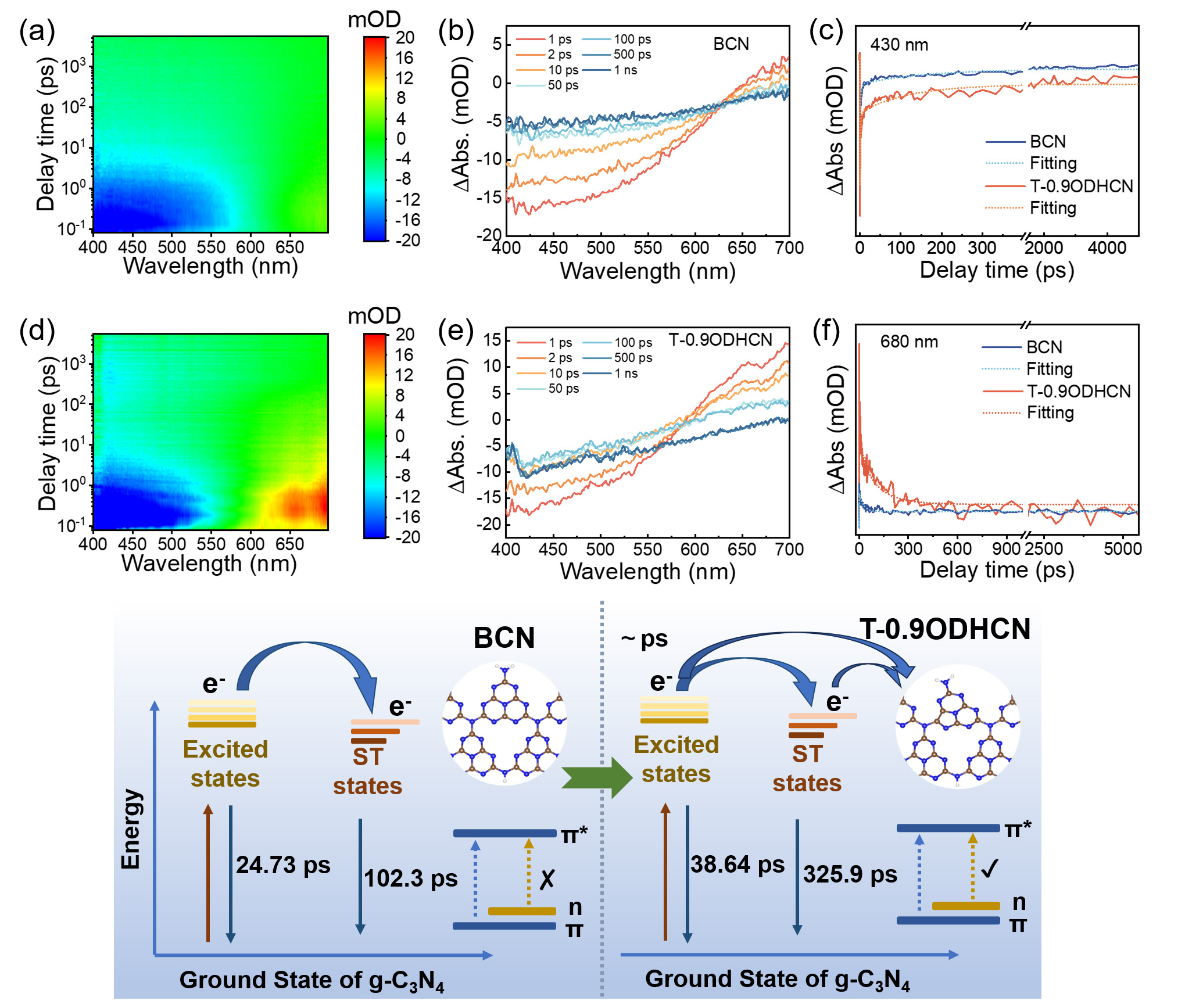
Recently, a research team led by Professor YU Zhiwu from the Hefei Institutes of Physical Science of the Chinese Academy of Sciences, developed a new type of carbon nitride catalyst, T-0.9ODHCN, by combining two advanced techniques: supramolecular self-assembly and defect engineering.
This catalyst, which has nitrogen (N) vacancies and unique electronic properties, performs 31.2 times better in photocatalytic hydrogen production compared to traditional carbon nitride.
The achievement was published in Chemical Engineering Journal.
Since carbon nitride was first used for photocatalytic water splitting in 2009, researchers have been working to improve its performance. However, pure carbon nitride has some limitations, including a small surface area, poor efficiency in separating light-induced electron-hole pairs, and low ability to use visible light.
The T-0.9ODHCN catalyst developed in this study overcomes these issues. By introducing nitrogen vacancies into the carbon nitride structure, the team was able to enhance the material’s ability to absorb visible light. The special tubular shape of the catalyst increases its surface area and improves the efficiency of light absorption. The nitrogen vacancies also reduce the material's bandgap, making it easier for electrons to participate in the hydrogen production process.
The key discovery is that the nitrogen vacancies induce an electronic transition (called the n-π* transition) in the carbon nitride. This transition improves the material's ability to absorb light and helps to separate and move the electrons more efficiently, leading to better performance in hydrogen production.
These findings offer new insights into improving carbon nitride-based catalysts and could lead to more effective methods for clean hydrogen production in the future.

Schematic diagram of electronic transition based on fs-TAS test results. (Image by YU Zhiwu)